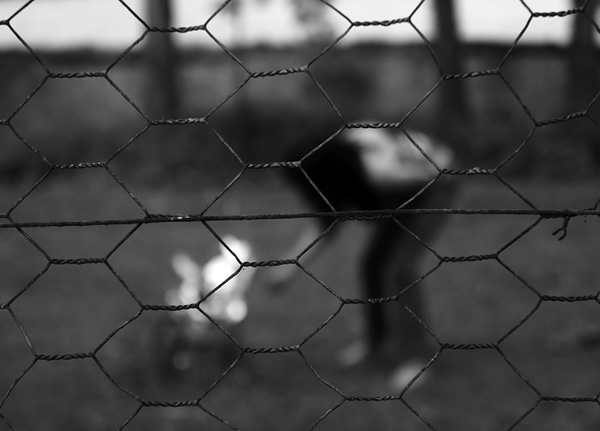
RESILIENCE 1 / SANS-CULOTTES
first performed on July 14, 2018
Priory of Vausse, Châtel-Gérard, Burgundy, France
performed once in 2018
KATRIN WOELGER
Vienna, Austria
katrinwoelger.com
RESILIENCE 1 / SANS-CULOTTES
KATRIN WOELGER
I was invited to do a site-specific performance in an old French priory on the anniversary of the storming of the Bastille. The theme was “Resilience.” The priory had a history during French Revolution. What could I—as a foreigner—do about this very big topic? Address it? Deny it? Where could I connect as a woman, a foreigner, an unpaid artist? What is revolutionary about my life?
Outside at the end of the grounds was a former tennis court; it was abandoned but surrounded by a fence, giving the impression of a cage. Behind the fence were some trees, a small wall, lots of stinging nettles, and fields.
The sans-culottes (literally “without breeches”) were the common people of the lower classes in late-18th-century France, a great many of whom became radical and militant partisans of the French Revolution in response to their poor quality of life under the Ancien Régime. The French word culotte is (a pair of) panties, pants, knickers, trousers, shorts, or (historically) breeches.
I was born in 1967. In the 1960s the phrase “bra burning” was well known. Women burned their bras because they felt that it proved a statement or made a stand for women’s rights and because it was a symbol that showed independence from men at that time. At the Miss America Protest 1968 there were trash cans that women called freedom trash cans. Women threw things such as bras, girdles, curlers, tweezers, high heels, etc. into them to be burned.
I found two metal trash cans close to the old tennis courts. I performed the following actions: